Which of the following is a difference between an organization map and an organization chart?
Consider the following:
In Phase A a business capability map and a core set of value streams were created while developing the Architecture Vision.
Why would such Architecture Descriptions need to be updated in Phase B?
Consider the following ADM phases objectives.
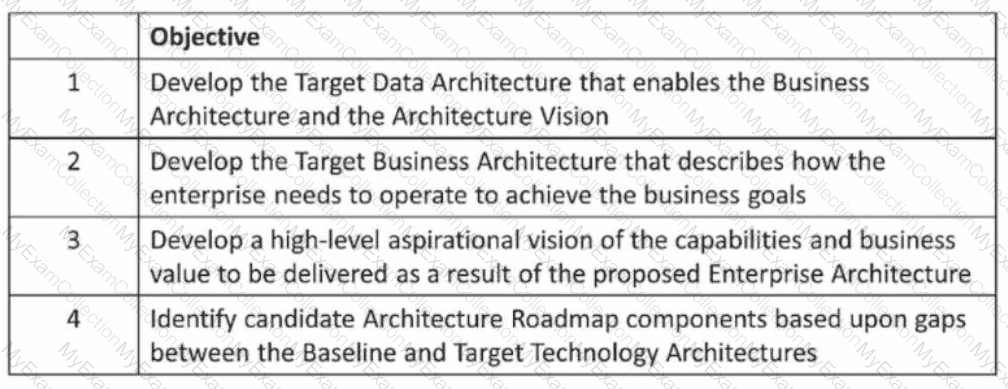
Which phase does each objective match?
Consider the following:
You need to analyze a new value stream within the scope of a project.
Which of the following would you use?
Which of the following describes how the Enterprise Continuum is used when developing an enterprise architecture?
Consider the following statements;
1. A whole corporation or a division of a corporation
2. A government agency or a single government department
3. Partnerships and alliances of businesses working together, such as a consortium or supply chain
What are those examples of according to the TOGAF Standard?
Consider the following business capability map. where cells of a model are given different colors to represent maturity levels (note the letters G, R. Y. P also denote the colors used = Green, Red. Yellow and Purple):
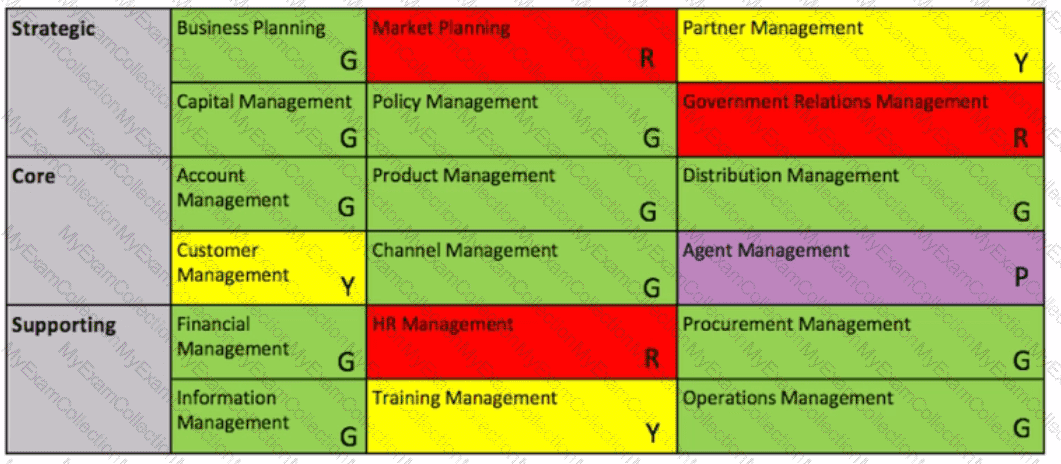
Which of the following best describes this technique?
Consider the following descriptions of ADM Phases:
1. It includes creation of an Enterprise Architecture Capability
2. It provides architectural oversight of the implementation
Which ADM Phases are these?
Which of the following are used for structuring a business capability map?
Consider the following example using the Business Model Canvas:
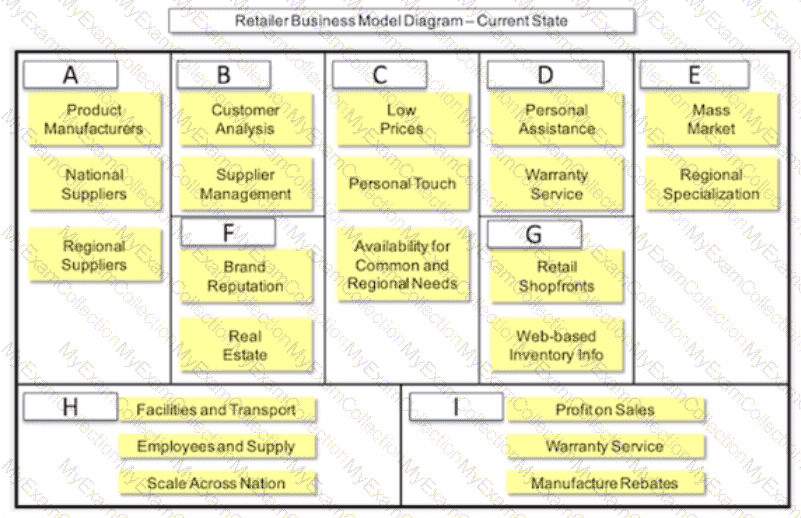
What are the segments labeled A, D and I?
Which of the following best describes the need for the ADM process to be governed?
Which of the following Business Architecture concepts should the architect examine and search for when developing the Architecture Vision?
In which part of a business scenario are business capabilities and value streams modelled?
Complete the sentence. The TOGAF standard covers the development of four architecture domains. Business. Data. Technology and___________.
Consider the following chart:
Which important concept for Enterprise Architecture Practitioners does it illustrate?
In the ADM, what is the name for a document deliverable that has completed a review and is approved?
Which of the following is an analysis technique which is used to show a range of different perspectives on the same set of business capabilities?
In business capability mapping, when you have documented all of the business capabilities, what should you do next?
Which of the following describes how business models are used within the TOGAF standard?
Which of the following is a benefit of developing a TOGAF business scenario?
Which of the following is the element of a value stream stage that describes the state change that triggers the value stream stage?
Consider the following example value stream:

Which of the following statements is most correct?
What process turns a set of business capabilities into a structure that communicates the right amount of detail to different stakeholder groups?
Consider the following representation of a business model:
Which of the following business models is this an example of?
What process is used to decompose a set of business capabilities to communicate more detail?
Consider the following Business Capability Example:
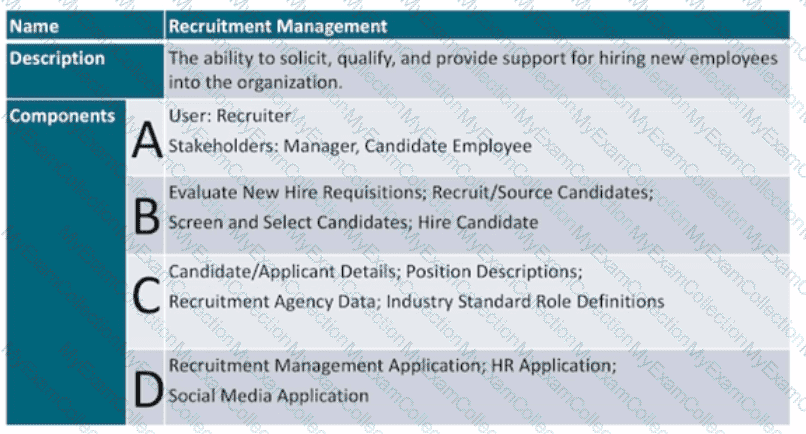
Which of the following are A and C?
Complete the following sentence:
Presenting different ____ and ____ to stakeholders helps architects to extract hidden agendas, principles, and requirements that could impact the final Target Architecture.
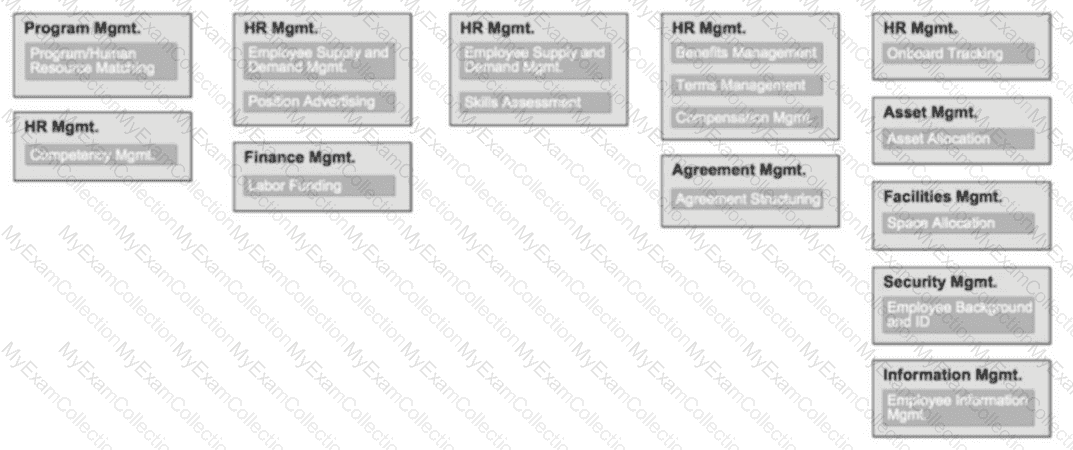 What is this an example of?
What is this an example of?
